 June 11, 2021 John E. Ross, KD8IDJ, Editor
| ||||||
Revitalization of Field Services with New Organization The Field Services that ARRL HQ provides to its member-volunteers is now in the spotlight with a reorganization and a fresh start to Section Manager and Affiliated Club engagement! The backbone of ARRL, and the Amateur Radio Service, is the expansive field organization of volunteers. This is especially true of our Board members, our "first among peers," who provide leadership to this vast network of engaged volunteers. During a marathon series of Zoom calls on Wednesday, June 9 with ARRL Section Managers and most ARRL Board members in attendance, the restructuring of the Field Services organization at HQ was announced. Bob Naumann, W5OV, who has a lifetime of experience as a radio amateur from contesting, to public service, to working with a number of well-known industry retailers, is now serving as the Director of Operations following the retirement of Norm Fusaro, W3IZ. Mike Walters, W8ZY, who has been involved with field volunteers for many years and is currently the Section Emergency Coordinator (SEC) for Connecticut, is now serving as the Field Services Manager. Bart Jahnke, W9JJ, who was managing Field Services, remains responsible for Radiosport and is also taking on the role of Regulatory & Advocacy following the retirement of Dan Henderson, N1ND. The meetings went on to discuss the focus the ARRL Board has placed on Field Services, working to create a new standing committee to oversee its revitalization and growth. Also discussed were the initiatives being undertaken with Section Managers to foster collaboration, share content, undertake projects, and set expectations. The first project will be a focused census that a dozen Section Managers across the country will be driving with local clubs to understand the disparity between the ever-growing number of licensed hams versus the unchanging number of active hams. We are very excited to turn the page and begin this new chapter for Field Services, and to continue forward with our digital transformation of ARRL. International Space Station to be in Cross-Band Repeater Mode for Field Day The Amateur Radio on the International Space Station (ARISS) cross-band repeater will be available for ARRL Field Day, June 26 - 27. Contacts will count toward Field Day bonus points as satellite contacts and Field Day contacts. Field Day rules limit stations to one contact on any single-channel FM The ARISS cross-band repeater uplink is 145.990 MHz (67 Hz tone), with a downlink of 437.800 MHz. ARISS suggests that those unfamiliar with the ISS repeater may want to practice with it prior to Field Day. ARISS had planned to switch modes to the Automatic Packet Reporting System (APRS) during the second week of June, but this won't happen until after the first ARISS school contact following ARRL Field Day. The ARISS ham station will be off-air during spacewalks on June 16 and June 20. ARRL Podcasts Schedule
The latest edition of Eclectic Tech (Episode 35) features a conversation with Patrick Stoddard, The On the Air and Eclectic Tech podcasts are sponsored by Icom. Both podcasts are available on iTunes (iOS) and Stitcher (Android), as well as on Blubrry -- On the Air | Eclectic Tech. WSJT-X Version 2.4.0 Now Generally Available, Version 2.5.0 on the Horizon WSJT-X version 2.4.0 is now available in general release. According to co-developer Joe Taylor, K1JT, WSJT-X version 2.4.0 includes the new digital mode Q65. This protocol is designed for two-way contacts over especially difficult propagation paths, including ionospheric "On paths with Doppler spread more than a few Hertz, the weak-signal performance of Q65 is the best among all WSJT-X modes," the Quick Start Guide asserts. WSJT-X version 2.5.0-rc1 (beta) has been released. According to the Release Notes, in version 2.5.0, "the Q65 decoder has been enhanced to measure and compensate for linear frequency drift in Q65 signals." Q65 uses 65-tone frequency-shift keying and builds on the demonstrated weak-signal strengths of QRA64, a mode introduced to WSJT-X in 2016. Q65 offers user message and sequencing identical to that in FST4, FT4, FT8, and MSK144. It includes a unique tone for time and frequency synchronization. As with JT65, this "sync tone" is readily visible on the waterfall spectral display. In addition, Q65 provides a sensitive "sync curve" near the bottom of the waterfall window. Testing showed that Q65 will enable stations with a modest Yagi and 100 W or more and to work one another on 6 meters at distances up to around 2,000 kilometers on most days of the year, in dead band conditions. For the complete announcement, see the WSJT-X website. Read an expanded version. Separate SATERN Nets Now Operational On June 2, The Salvation Army Team Emergency Radio Network (SATERN) launched a new SATERN International SSB Net on 14.325 MHz. Net sessions will take place Mondays, Wednesdays, and Fridays at 11 AM Central Daylight Time, in cooperation with the Hurricane Watch Net (HWN), which has used 14.325 MHz for many years during its own activations. Just down the band, another net sporting the same SATERN acronym -- the Strategic Auxiliary Team Emergency Readiness Net -- has established itself on SATERN's former "The new SATERN organization (Strategic Auxiliary Team Emergency Readiness Net) is not associated with The Salvation Army," SATERN National Committee Chair Michele Heaver told ARRL. "At this time, SATERN (Salvation Army Team Emergency Radio Network) is no longer associated with Lee Glassman and does not support his new efforts with the Strategic Auxiliary Team Emergency Readiness Net. This is a breakaway organization." The SATERN split will entail a new "updated and revised SATERN website" in the near future, The Salvation Army (TSA) said in its announcement. The new SATERN under Glassman has established its own web presence. On his QRZ.com profile, Glassman, an Assistant Emergency Coordinator for South Texas District 14 Amateur Radio Emergency Service (ARES), cited "a conflict of ideals." Among other things, he said he was put off by a building list of requirements imposed by TSA that included credentialing and background checks. Glassman told ARRL that the net retained the SATERN acronym because it was familiar to net users, "plus the fact that TSA pretty much decided to dissolve the daily 20-meter net with no plans to "We do not disparage TSA, nor do we permit others to do so," Glassman said. "We wholly encourage everyone to support TSA, ARES, ARC, and any other group that they wish." Glassman lists himself as co-manager of the Strategic Auxiliary Team Emergency Readiness Net, along with Ned Griffin, KL7QK. The net's stated purpose is to provide backup communication support during disasters. The "original" SATERN -- the Salvation Army Team Emergency Radio Network -- is a fully integrated Salvation Army program within The Salvation Army Emergency Disaster Services (EDS). It was organized in 1988 by Major Patrick McPherson, WW9E (SK). Read an expanded version. ARRL Learning Network Webinars Visit the ARRL Learning Network (a members-only benefit) to register, check on upcoming webinars, and to view previously recorded sessions. Improving Your Club's 2021 Field Day Score -- Paul Bourque, N1SFE, ARRL Contest Program Manager / Thursday, June 10, 8 PM EDT (0000 UTC on Friday, June 11). Learn how your club or group can take advantage of the 2021 ARRL Field Day rules waivers for operating as Class D or E from home. We'll discuss how individuals or groups can boost their scores by earning bonus points, review how to use the Field Day web applet to submit Antenna Zoning: Special six-part webinar series -- Fred Hopengarten, K1VR, author of Antenna Zoning for the Radio Amateur
Introduction to Remote HF Operation -- Davide Lanfranconi, W6DGE, and Kevin Shin-Wheeler, N7KSW, Cal Poly Amateur Radio Club / Tuesday, June 22, 1 PM EDT (1700 UTC). Lanfranconi and Shin-Wheeler will discuss the idea, process, and challenges encountered while getting their club's remote HF station on the air, as well as some methods and resources available for those with a similar interest. A Q&A session and live demo are included. ARRL members may register for upcoming presentations and view previously recorded Learning Network webinars. ARRL-affiliated radio clubs may also use the recordings as presentations for club meetings, mentoring new and current hams, and discussing amateur radio topics. These Learning Network presentations are sponsored by PreppComm.
The ARRL Learning Network schedule is subject to change. Announcements
ARDC Grant Will Support HAMNET Expansion in Europe Amateur Radio Digital Communications (ARDC) has awarded a grant to support European expansion of HAMNET, a high-speed digital network that interconnects automated amateur radio stations using links in the 13-, 6-, and 3-centimeter bands, the Deutscher Amateur "Amateur radio is a global hobby, and ARDC wanted to enable international funding from day one," ARDC President Phil Karn, KA9Q, said. "One way to do this is to work with international organizations that meet [IRS] 501(c)(3) requirements and are able to implement funding in their region. We are excited to see what the DARC will do and look forward to entering into similar partnerships with other organizations outside the US." DARC Chair Christian Entsfellner, DL3MBG, said DARC is "very pleased that we can give the European HAMNET project a big boost with this grant." DARC will present this project in more detail at the virtual HAM RADIO World, June 25 - 27. EASAT-2 and Hades Launch Delayed Again Licensing issues have caused another postponement for the EASAT-2 and Hades satellites. The two amateur radio satellites built by AMSAT-EA (Spain) are planned to be carried aloft by a SpaceX launch vehicle. Spain's IARU member-society URE (Unión de Radioaficionados Españoles) said the Federal Aviation Administration (FAA) in the US EASAT-2 and Hades were set to launch in January aboard a SpaceX Falcon 9 rocket, but the FAA rejected the Momentus license at that time as well. Hades and EASAT-2 are currently at the Momentus space integrator facilities in Santa Clara, California. Both satellites are FM and FSK voice repeaters and have digitized voice recordings. Hades also incorporates a slow-scan TV (SSTV) camera, developed by the Brno University of Technology in the Czech Republic. As an experimental payload, EASAT-2 incorporates a basaltic material from Lanzarote, similar to lunar basalts, provided by the research group on meteorites and planetary geosciences of the Spanish Research Council (CSIC) in the Institute of Geosciences. It's thought the material could be used as a construction material on the moon. Frequencies have been coordinated for both satellites. More information is in the May 2021 edition of the AMSAT-EA newsletter (in Spanish). Spain's IARU member-society URE has announced that its satellite ground station has been automated and is ready for the launch of the GENESIS, EASAT-2, and Hades satellites. The satellite monitoring and The station will automatically record and analyze the telemetry of the twin GENESIS satellites, as well as that of EASAT-2 and Hades -- all designed and built by AMSAT-EA. It allows for remote control to instruct satellites to modify operation. The GENESIS satellites should be launched soon. -- Thanks to AMSAT News Service via AMSAT-UK; AMSAT-EA Germany to Resume Exams, Testing Demand Remains Unmet in Brazil Germany is allowing in-person amateur radio examinations with a reduced number of candidates per exam session, while the heavy testing demand in Brazil is not being met, according to Liga de In Germany, regulator Bundesnetzagentur (BnetzA) says examination sessions may resume for individual exam locations with fewer candidates each time. The regulator had canceled all amateur radio exam administration sessions and asked candidates not to register for testing. That changed at the start of June. The regulator said it's attempting to offer amateur exams again "at all usual locations." The agency said, "Test participants who have already been invited to an examination and whose examination had to be canceled will receive further information from us by post, pending any further development of the coronavirus pandemic." Finally, BNetzA points out that all invitations to amateur radio exams are subject to the further development of the coronavirus pandemic. Unlike the US, Canada, and the UK, Germany does not permit online exam sessions. Tests must be taken in person at a limited number of government exam centers. Brazilian telecommunications regulator Agência Nacional de Telecomunicações (ANATEL) met with representatives of LABRE in mid-May to discuss the conduct of that country's online exams. "ANATEL faces problems in meeting the great demand of people from ANATEL said it has only a few examiners and cited technical limitations in the online test application platform, Microsoft Teams, preventing the agency "from making further progress in meeting this demand." During the meeting, LABRE cited what it considers an even more serious problem with the current complexity and slow process involved in granting licenses. LABRE said this has not only frustrated candidates, but led some to simply give up on obtaining amateur radio operator and station licenses. LABRE said the process of getting licensed has been lengthy, extremely complex, and bureaucratic. ANATEL proposed a joint effort to administer tests and LABRE said it would assist in the initiative, including online testing. The agency also pointed out that standards governing amateur radio licensing in Brazil are undergoing revision. Amateur Radio in the News ARRL Public Information Officers, Coordinators, and many other member-volunteers help keep amateur radio and ARRL in the news.
Share any amateur radio media hits you spot with us. The K7RA Solar Update Tad Cook, K7RA, Seattle, reports: Sunspot activity has shown a modest increase over the past 3 weeks, with weekly average daily sunspot averages rising from 24.9 to 28 last week to 34.9 this week. Oddly, average daily solar flux, at 77.7, has remained remarkably unchanged over the same period.
Predicted solar flux over the next month is 78, 75, and 75 on June 10 - 12; 70 on June 13 - 17; 75 on June 18 - 20; 80, 82, and 77 on June 21 - 23; 76 on June 24 - July 5; 74, 74, and 75 on July 6 - 8, and 74 on July 9 - 14. Predicted planetary A index is 5 on June 10 - 13; 8 on June 14 - 15; 20 and 18 on June 16 - 17; 5 on June 18 - 25; 7 on June 26; 5 on June 27 - July 4; 15, 10, and 8 on July 5 - 7; 5 on July 8 - 12; 20 and 8 on July 13 - 14, and 5 after mid - July. Watching 6 meters on pskreporter.info at 0550 UTC on June 10, I noticed an odd late-night opening in western North America. It showed many long-distance FT8 contacts, but some had positive signal reports. One stood out. It was a 609-mile +5 dB report from K6VVP in San Francisco (CM87rs) to WA7DUH in Eastern Washington (DN06hg). Sunspot numbers for June 3 - 9 were 28, 30, 30, 42, 53, 34, and 27, with a mean of 34.9. The 10.7-centimeter flux was 75.5, 77.1, 74.4, 77.4, 80.8, 79.9, and 78.6, with a mean of 77.7. Estimated planetary A indices were 6, 5, 4, 5, 12, 5, and 4, with a mean of 5.9. Middle latitude A index was 8, 4, 4, 6, 15, 7, and 4, with a mean of 6.9. A comprehensive K7RA Solar Update is posted Fridays on the ARRL website. For more information concerning radio propagation, visit the ARRL Technical Information Service, read "What the Numbers Mean...," and check out K9LA's Propagation Page. A propagation bulletin archive is available. For customizable propagation charts, visit the VOACAP Online for Ham Radio website. Share your reports and observations. In Brief...
Just Ahead in Radiosport
Upcoming ARRL Section, State, and Division Conventions Many conventions and hamfests have been canceled or postponed due to the coronavirus pandemic. Check the calendar of canceled events on the ARRL website.
Find conventions and hamfests in your area. ARRL -- Your One-Stop Resource for Amateur Radio News and Information. . .
Subscribe to...
Free of charge to ARRL members...
| ||||||
(1).jpg) satellite. Note that contacts made during Field Day by ISS crew would only count for contact credit, but not for satellite bonus points. ISS cross-band repeater contacts are also valid AMSAT Field Day satellite contacts.
satellite. Note that contacts made during Field Day by ISS crew would only count for contact credit, but not for satellite bonus points. ISS cross-band repeater contacts are also valid AMSAT Field Day satellite contacts..jpg) The latest episode of the On the Air podcast (Episode 18) helps prepare listeners for ARRL Field Day on June 26 - 27. Fred Kemmerer, AB1OC, president of the Nashua New Hampshire Amateur Radio Society, offers advice about how to enjoy one of the largest ham radio operating events of the year!
The latest episode of the On the Air podcast (Episode 18) helps prepare listeners for ARRL Field Day on June 26 - 27. Fred Kemmerer, AB1OC, president of the Nashua New Hampshire Amateur Radio Society, offers advice about how to enjoy one of the largest ham radio operating events of the year!.jpg) WD9EWK. Patrick brings us up to date on amateur satellites and also offers advice for ARRL Field Day.
WD9EWK. Patrick brings us up to date on amateur satellites and also offers advice for ARRL Field Day.-Screen.PNG) scatter, troposcatter, rain scatter, TEP, EME, and other types of fast-fading signals.
scatter, troposcatter, rain scatter, TEP, EME, and other types of fast-fading signals..jpg) frequency of 14.265 MHz. The latter net was organized by Lee Glassman, WA5LEE, a former manager of the original SATERN. The Salvation Army made the distinction clear in its announcement launching the new SSB net on 20 meters.
frequency of 14.265 MHz. The latter net was organized by Lee Glassman, WA5LEE, a former manager of the original SATERN. The Salvation Army made the distinction clear in its announcement launching the new SSB net on 20 meters..PNG) replace it, and we did not wish the regulars to be kept hanging. We changed what the acronym stands for. We also have a pending trademark on the name and logo."
replace it, and we did not wish the regulars to be kept hanging. We changed what the acronym stands for. We also have a pending trademark on the name and logo." your score, and go over how to attribute your score to your club's aggregate score. This presentation highlights all you need to know to operate as a group for ARRL Field Day 2021.
your score, and go over how to attribute your score to your club's aggregate score. This presentation highlights all you need to know to operate as a group for ARRL Field Day 2021.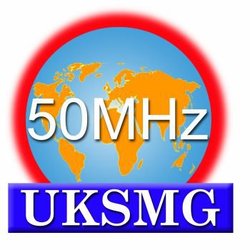 The UK Six Meter Group's (UKSMG) widely accepted
The UK Six Meter Group's (UKSMG) widely accepted 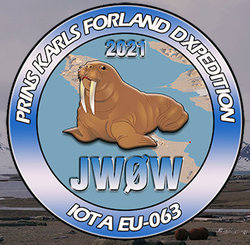 Six operators will depart for Prins Karls Forland Island in July, landing by dinghy, to operate as
Six operators will depart for Prins Karls Forland Island in July, landing by dinghy, to operate as  Radio Club (
Radio Club (.jpg) has rejected issuing a license to the integrator Momentus. The FAA denial stems from the company's capital structure, which, it says, could endanger US national security. The next launch opportunity won't come until December.
has rejected issuing a license to the integrator Momentus. The FAA denial stems from the company's capital structure, which, it says, could endanger US national security. The next launch opportunity won't come until December.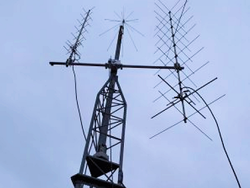 telecommand station is located at URE's Madrid headquarters. Work on the project began before the COVID-19 pandemic and included installation of a Linux computer, configuration of software-defined radio (SDR) receive software, transmitting software, and PLUTO hardware, along with automation of the rotator control.
telecommand station is located at URE's Madrid headquarters. Work on the project began before the COVID-19 pandemic and included installation of a Linux computer, configuration of software-defined radio (SDR) receive software, transmitting software, and PLUTO hardware, along with automation of the rotator control.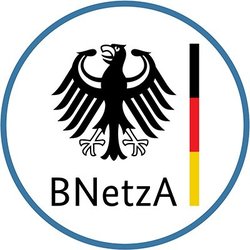 Amadores Brasileiros de Rádio Emissão (LABRE), Brazil's national amateur radio society.
Amadores Brasileiros de Rádio Emissão (LABRE), Brazil's national amateur radio society. all over the country who wish to become radio amateurs or progress in class," the agency said.
all over the country who wish to become radio amateurs or progress in class," the agency said.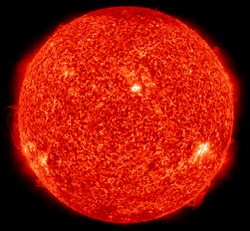 Average daily planetary A index went from 6.1 last week to 5.9 this week. The middle latitude A index rose from 6.3 to 6.9.
Average daily planetary A index went from 6.1 last week to 5.9 this week. The middle latitude A index rose from 6.3 to 6.9..jpg) The FCC is
The FCC is 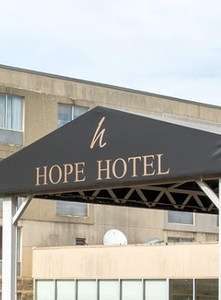 Dayton Hamvention® contesting-related activities will move to the
Dayton Hamvention® contesting-related activities will move to the .jpg) ARRL Volunteer Curator of ARRL's historical collection, Michael Marinaro, WN1M, of South Glastonbury, Connecticut, died on May 17. An ARRL member, he was 84. "Michael loved the history of radio and had volunteered at ARRL for the past 15 years," said recently retired ARRL Product Review Engineer Bob Allison, WB1GCM. He authored historical articles for QST, RadCom, and The AWA Journal, where he was a contributing editor. Licensed since 1951, he was active on HF. "This is a loss for ARRL and its members," Allison said.
ARRL Volunteer Curator of ARRL's historical collection, Michael Marinaro, WN1M, of South Glastonbury, Connecticut, died on May 17. An ARRL member, he was 84. "Michael loved the history of radio and had volunteered at ARRL for the past 15 years," said recently retired ARRL Product Review Engineer Bob Allison, WB1GCM. He authored historical articles for QST, RadCom, and The AWA Journal, where he was a contributing editor. Licensed since 1951, he was active on HF. "This is a loss for ARRL and its members," Allison said..jpg)








